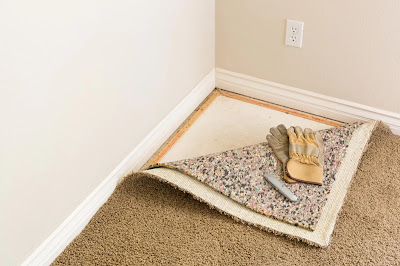Carpet underlay, although often overlooked, plays a critical role in the overall performance and longevity of your carpeted flooring. It serves as a foundation, providing support, cushioning, insulation, and sound reduction. Understanding the different types of carpet underlay and the materials they are made of can help you make an informed decision when selecting the right underlay for your space.
Foam Underlay:
Foam underlay is one of the most common types of carpet underlay, favored for its affordability and ease of installation. It is typically made from polyurethane foam, which is available in various densities and thicknesses to suit different needs and preferences. Low-density foam underlay offers basic support and cushioning, while high-density foam provides more substantial support and durability. Foam underlay is lightweight, flexible, and easy to cut to size, making it suitable for both residential and commercial applications.
Rubber Underlay:
Rubber underlay, also known as crumb rubber underlay, is made from recycled rubber materials such as car tires. It offers excellent support, resilience, and durability, making it ideal for high-traffic areas and heavy furniture. Rubber underlay is known for its superior sound absorption properties, effectively reducing impact noise and sound transmission between floors. While rubber underlay tends to be more expensive than foam underlay, its long-lasting performance and environmental benefits make it a popular choice for homeowners and contractors alike.
Felt Underlay:
Felt underlay is made from natural or synthetic fibers that are tightly woven together to create a dense, resilient material. It offers excellent support, cushioning, and insulation, making it suitable for both residential and commercial use. Felt underlay provides a firm and stable base for carpet installation, reducing the risk of wrinkles, creases, and premature wear. It also has good thermal insulation properties, helping to keep rooms warm in winter and cool in summer. Felt underlay is available in various thicknesses and weights to accommodate different carpet styles and requirements.
Combination Underlay:
Combination underlay, also known as hybrid underlay, combines two or more materials to offer the benefits of each. For example, a combination of foam and rubber underlay may provide the support and cushioning of foam with the durability and sound absorption of rubber. Combination underlay allows homeowners and contractors to customize their flooring solutions to meet specific needs and preferences. By selecting the right combination of materials, you can achieve optimal comfort, insulation, and performance in your carpeted space.
In conclusion, carpet underlay is an essential component of any carpet installation, providing support, cushioning, insulation, and sound reduction. Understanding the different types of underlay and the materials they are made of can help you choose the right underlay for your space. Whether you opt for foam, rubber, felt, or a combination underlay, investing in high-quality underlay will enhance the performance and longevity of your carpeted flooring.






